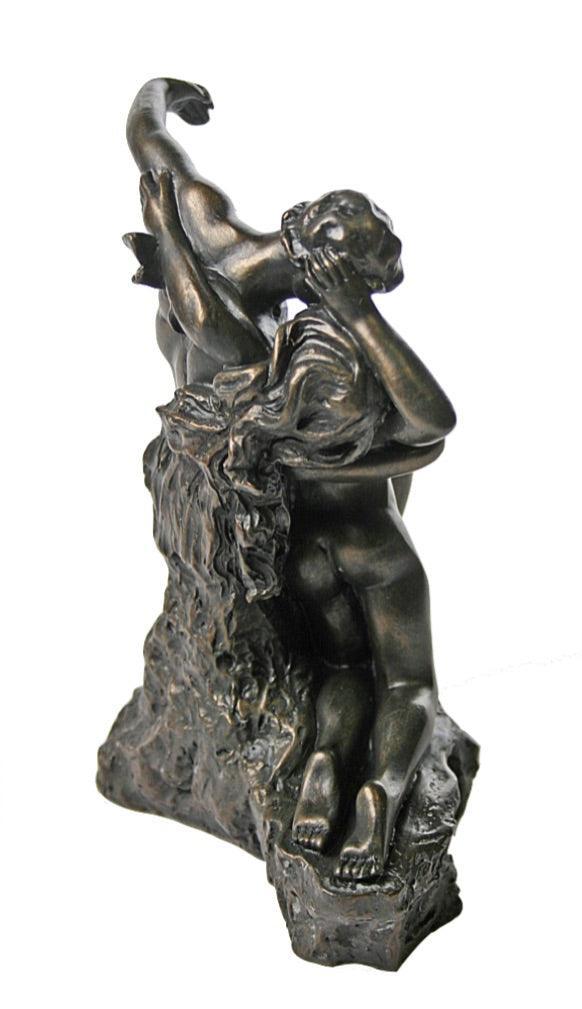Eternal Springtime Lovers Embrace Eternal Kiss by Rodin 6.75H
Eternal Springtime Lovers Embrace Eternal Kiss by Rodin 6.75H
SKU:RO20
In stock
Couldn't load pickup availability
This expressive sculpture of two lovers embracing in a kiss called Eternal Spring is almost Baroque in style. It rapidly became one of Rodin's most popular works. Multiple bronze and marble versions were created. Rodin probably designed the image for his famous Gates of Hell which explains the frontal composition. The lovers exude the joy Rodin experienced during the first years of his relationship with Camille Claudel as does the renowned sculpture The Kiss. At that time, he discovered, as he put it, how much the combination of physical attraction and mental compatibility could mean to a man.
- Statue replica is from the highly collectible Parastone Museum Collection sculpted in Europe.
- Material: Collectible quality, resin with a bronze finish.
- Included : Description card about artist and artwork in four languages.
- Dimensions : 6.75"H x 4.5"W x 5"D. Weighs 1.6 lbs.
Auguste Rodin (1840-1917)
For a long time the life of the sculptor Rodin was marked by the mixed reactions his work provoked with the audience. The lack of understanding for Rodin's work was partly due to the original character of his art. He felt little for the strict formats of Romanticism and neither did he want to identify himself with the neutrality of the Impressionists.
Rodin's work is characterized by a passion for the human body and he considered himself incapable of any creativity if he did not have a living model in front of him. "in everything I follow nature and I never pretend I am able to control her. My only ambition is the be subservient and faithful to her" he said. Questions about his often controversial , erotic works were answered with the remark: "Art is actually nothing more than a manifestation of lust, which only arises from the potency to love."
Rodin's life upheld this belief with a vast succession of lovers having passed his artistic eye. Many affairs were brief, but one of them turned out to be of enormous value to his later work, Camille Claudel. This self-willed, fierce woman, who was a very talented sculptor herself, inspired him to create his most famous and admired sculptures. The affair continued for a long time, although Camille had to put up with Rodin's numerous escapades and his loyal companion Rose Beuret. Eventually, the affair ended and Camille suffered the dramatic consequences of this split. She became isolated and confused and in the end she was forced by her family to have herself admitted to a psychiatric hospital.
Towards the end of his life, Rodin could look back upon a successful artistic career. He had given his works to the French government, which had in turn promised to found a museum in his name. Rodin was buried with full honors and the words his father had once spoken turned out to be prophetic: The day will come that people will say about you, what they say about all truly great men: the artist Auguste Rodin is dead, but he lives on for our descendants, for the future.










